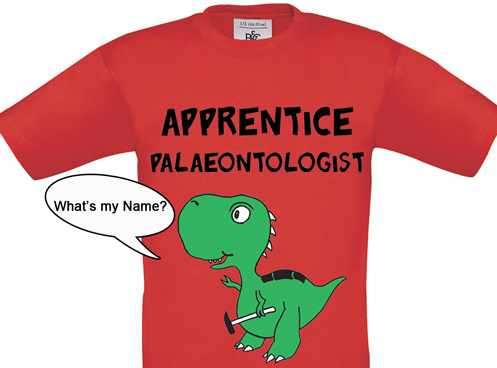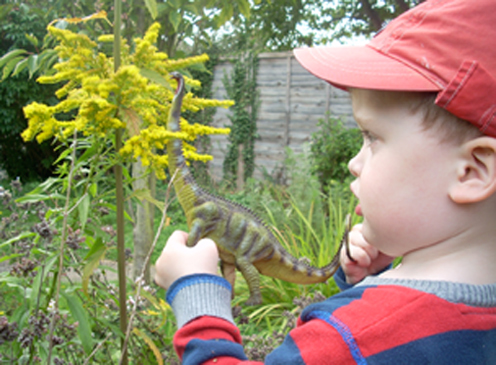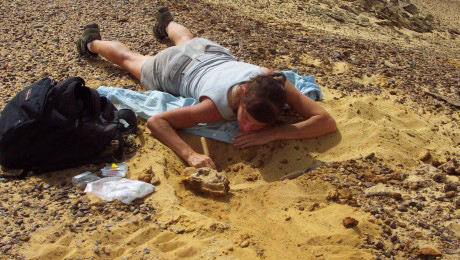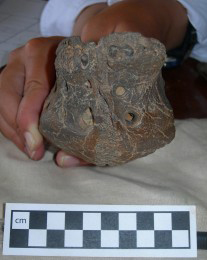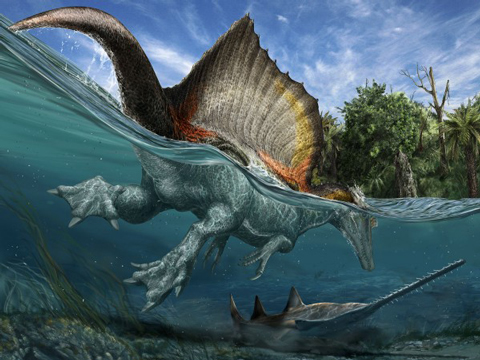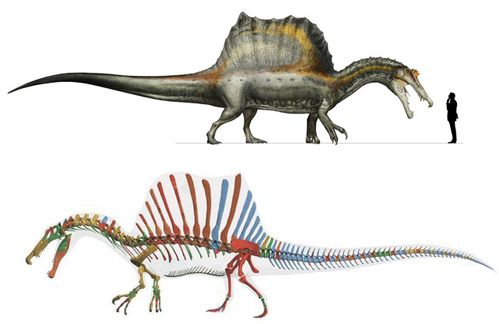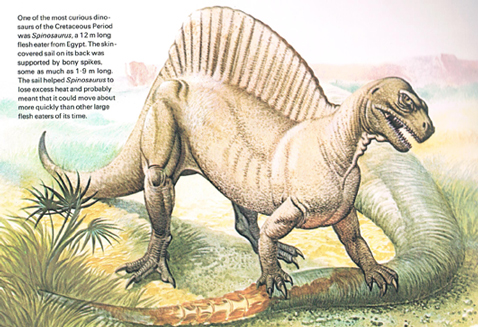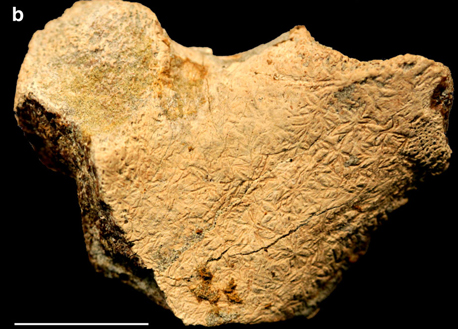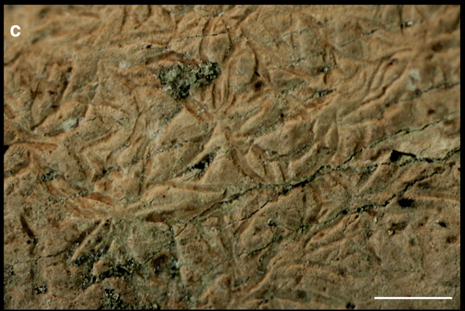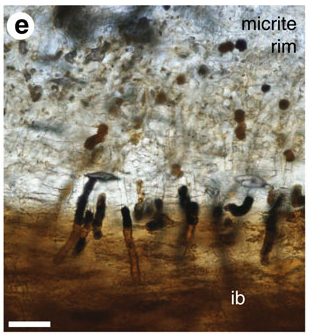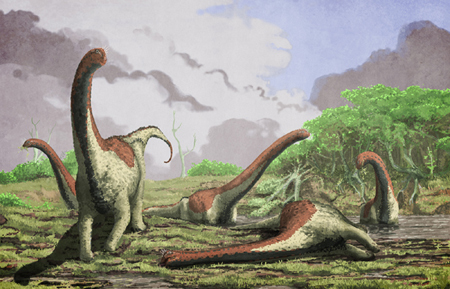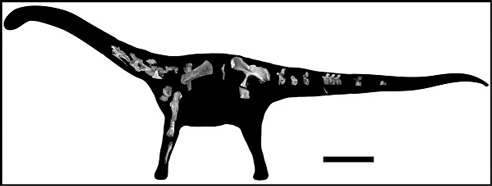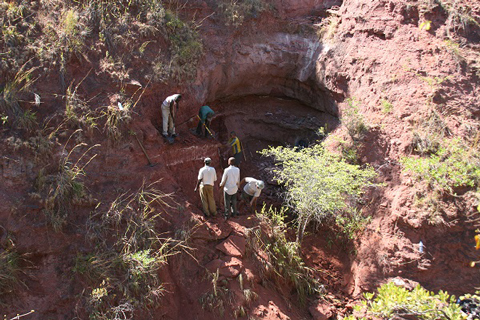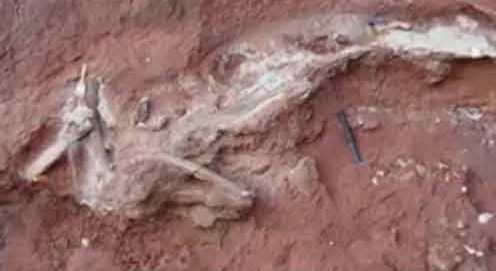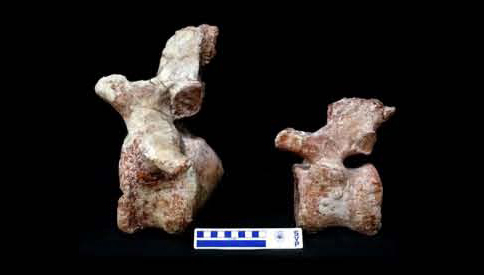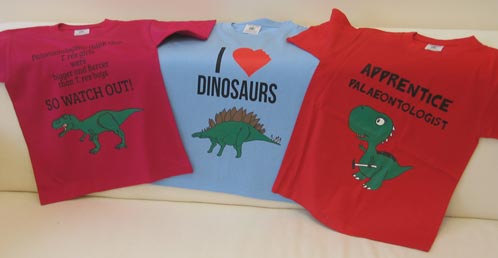Ikrandraco avatar – New Species of Cretaceous Pterosaur Described
An international team of palaeontologists have described a new species of flying reptile that lived in what is now China during the Cretaceous period, about 120 millions years ago, and named it after the flying dragon-like creatures from the 2009 movie blockbuster directed by James Cameron – Avatar. The fossils, which have both been laterally compressed, were found at two separate sites, around fifteen miles apart, although one is smaller than the other, they have both been assigned to a single new species – Ikrandraco avatar, the name translates as “Ikran dragon from Avatar”.
Ikrandraco avatar
One of the Newly Described Pterosaur Fossils
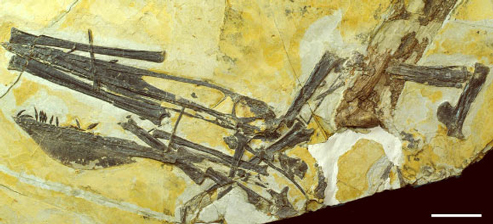
White scale bar = 5cm.
Picture credit: Scientific Reports/Xiaolin Wang et al
Both fossils come from the Jiufotang Formation of north-eastern China (Liaoning Province), although the exact stratigraphic location for both specimens has been difficult to determine. The larger of the two specimens indicates a wingspan in excess of 2.4 metres, making this flying reptile slightly larger than a Golden Eagle. The lower jaw had a distinct, semi-circular crest on its anterior portion, it has been suggested that a large “hook” at the back of this structure helped to support either an enlarged throat or a pouch, broadly similar to that seen in extant Pelicans.
A Joint Chinese and Brazilian Research Team
The joint Chinese and Brazilian research team that studied the fossil material and published the scientific paper on the new discoveries, propose that this pterosaur probably fed on small fish. It may have flown over the water catching prey by skimming its lower jaw into the water. Once the jaw connected with a fish, it snapped shut and the fish was stored in the throat pouch prior to swallowing.
This type of feeding, a skimming over the water surface to collect fish approach has been proposed before for members of the pterosaur family. To read an article written by Everything Dinosaur team members back in 2007, click on the link here: Pterosaur Feeding Habits – Could they Skim Surface Waters for Fish?
New Pterosaur Species
Dr Alexander Kellner of the Federal Univervisty (Rio de Janeiro, Brazil), one of the senior authors of the academic paper and an authority on Cretaceous pterosaurs commented:
“Ikrandraco didn’t have a crest on the top of its elongated head as many pterosaurs did. Behind the lower jaw crest was a hook-like structure that appears to have been the anchor point for the throat pouch.”
The Jiufotang Formation is a member of the extensive Jehol Group and scientists have been able to build up an detailed picture of the environment that existed in this part of the world in the Early Cretaceous. Although the exact age of the Jiufotang Formation is still debated, most observers now believe that the majority of the strata was laid down in the Early Cretaceous (Aptian faunal stage).
Early Cretaceous Pterosaur
A spokesperson from Everything Dinosaur stated:
“It is now thought that the highly fossiliferous rocks of this part of the world were laid down around 120 million years ago.”
Ikrandraco avatar exhibits a number of anatomical characteristics that suggest it was a piscivore. For example, the teeth in the jaw are small, sharp and pointed, ideal for grabbing and holding slippery fish. The unusual blade-like crest on the lower jaw reminded the scientists of the crests seen on the dragon like creatures in the 2009 movie Avatar.
Most flying reptile fossils have been found in marine strata. However, over the last twenty years or so an increasing amount of pterosaur fossil material has been found in rocks that were laid down inland. A number of different pterosaur types co-existed in this part of China around 120 million years ago, intriguingly, these reptiles shared the air with a large number of primitive, enantiornithine birds.
A Tropical Paradise
The habitat was a tropical paradise, with verdant forests and a great many, large bodies of freshwater that teemed with fish. Fossils found in this region include feathered dinosaurs (saurischian as well as ornithischian), early mammals, frogs, turtles, fish and birds.
Commenting on the habitat, Dr Xiaolin Wang of the Chinese Academy of Sciences, a co-author of the scientific paper stated:
“It [Ikrandraco] lived in a warm region teeming with life that included feathered dinosaurs, birds, mammals and frogs along with a variety of trees and other plants.”
An Artist’s Impression of Ikrandraco avatar (Early Cretaceous of North-eastern China)
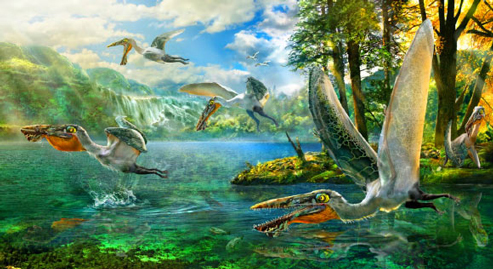
A flock of Ikrandraco Pterosaurs “fishing”.
Picture credit: Chuang Zhao
Examining Skull and Jaw Crests in the Pterosauria
Of the 130 or so genera of pterosaur described to date, a number of them are known to have had skull or jaw crests. These crests were either made of bone or formed by a combination of bone and soft tissue. However, Ikrandraco avatar is unique in that it only had a crest on its lower jaw (mandible). There is no evidence of a crest on the skull or upper jaw. Up until now, blade-like crests were known exclusively in the Anhangueria family and in Cimoliopterus cuvier with such crests also noted in Ludodactylus sibbicki (although the evidence of a blade-like crest in this species is debated).
The researchers also note that Cearadactylus atrox (an ornithocheirid from Brazil), also possessed a crest, but only on the front portion of the upper jaw (the premaxilla). The crest configuration of a crest on the skull but none on the mandible is much more common in the Pterosauria. In essence, skull crests are far more common than crests on the jaws and a single, lower jaw crest in a species was unheard of until Ikrandraco came along.
The Second Specimen of Ikrandraco avatar
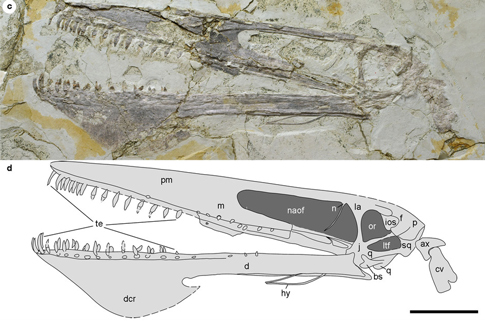
Scale bar = 5cm.
Picture credit: Scientific Reports/Xiaolin Wang et al
The photograph and line drawing above shows the second referred specimen of I. avatar. The crest on the lower jaw with its distinctive “hook” at the back (labelled dcr – dentary crest) can clearly be made out.
Closely Related Species
As the specimens were found around fifteen miles apart, it could be that these two fossils represent different, but closely related species. However, the researchers discounted this as both specimens were preserved in a left lateral view and although flattened, the team did not record any observable anatomical differences. Both specimens revealed evidence of a unique, hook-like structure at the back of the blade-like crest. This could have served as an anchor point for soft tissues that made up either an extended throat or a pouch.
The presence of throat sacs (pouches) in pterosaurs has been proposed on numerous occasions. The suggestions have been made for Late Jurassic species from the famous Solnhofen deposits of southern Germany. It has been suggested that both Rhamphorhynchus and Pterodactylus had pouches. In all previously described cases, the pouch starts at the posterior ventral part of the mandible and extends until the level of the third or fourth neck bones (cervical vertebrae).
A Pouch Like a Pelican?
Due to the difficulties of preservation of such structures, their properties, size and shape are disputed.
Some palaeontologists have proposed that these pouches were similar to those seen in extant Pelicans, others have used the more neutral term of “loose extensible skin”. These protagonists argue that this gullet structure might have helped them swallow larger prey items whole, as seen in modern day Ostriches, for example.
It is interesting to note that the inspiration for the scientific name came from the movie Avatar. Next year sees the release of Jurassic World, the fourth movie in the extremely successful Jurassic Park franchise. Although a closely guarded secret, the film is very likely to include a super-sized, apex predator with a large number of teeth. We at Everything Dinosaur confidently predict that whatever the film makers come up with, it will one day be the inspiration behind the naming of another prehistoric animal that is new to science.
For scale models of pterosaurs and other Early Cretaceous prehistoric animals: CollectA Deluxe Pterosaur and Prehistoric Animal Models.


